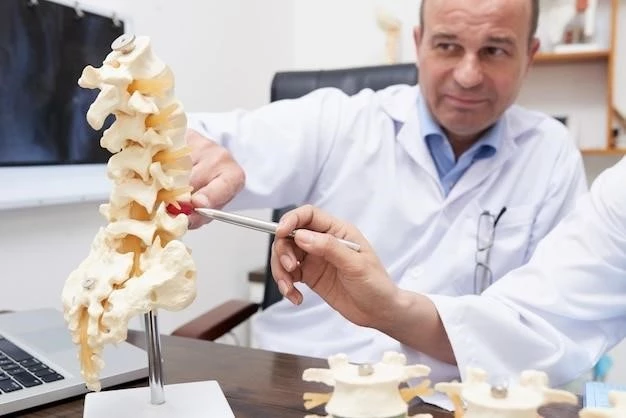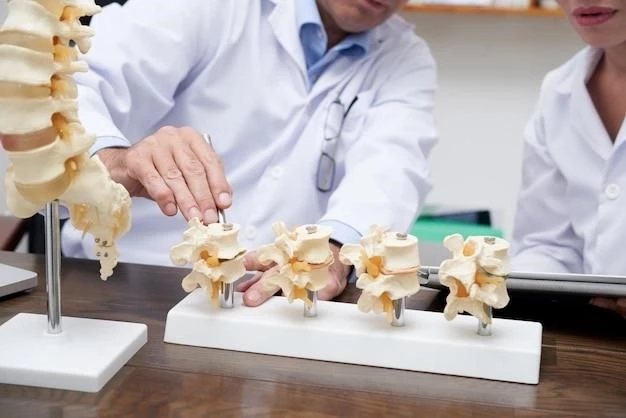Introduction
Spondyloepimetaphyseal dysplasia, Strudwick type, is an inherited bone growth disorder resulting in dwarfism, skeletal abnormalities, and vision issues.
Overview of Strudwick Syndrome
Spondyloepimetaphyseal dysplasia, Strudwick type, is a genetic disorder characterized by abnormal bone growth affecting spinal and skeletal development. The condition presents with dwarfism, skeletal abnormalities, vision issues, and distinctive clinical features such as hypertelorism and a flat face. Initial symptoms in infants include a cleft palate and short limbs, while later-onset symptoms involve severe coxa vara and a waddling gait. This rare disorder is linked to mutations in the COL2A1 gene and shares overlapping symptoms with related skeletal dysplasias.

Clinical Presentation
Individuals with Strudwick syndrome present with distinctive clinical features such as hypertelorism, a flat face, short limbs, respiratory distress, cleft palate, protruding abdomen, and vision problems. Later in life, they may experience severe coxa vara, a waddling gait, and skeletal abnormalities.
Initial Symptoms in Infants
Strudwick syndrome manifests in infants with symptoms like cleft palate, short limbs and trunk, protruding abdomen, and respiratory distress due to a small chest with short ribs. Clinical features also include hypertelorism and a flat face. Intelligence and life expectancy of affected individuals are typically normal; however, severe skeletal issues like coxa vara and a waddling gait become apparent later in life.
Later-Onset Symptoms
As individuals with Strudwick syndrome age, they may develop knock-knees (knees curve inward), stickler syndrome overlapping symptoms, and a distinctive radiographic feature like the Morquio syndrome, among other skeletal abnormalities. Inheritance of the condition follows an autosomal dominant pattern, with overlapping symptoms with related conditions like Kniest dysplasia and achondrogenesis type II.
Genetics
Spondyloepimetaphyseal dysplasia, Strudwick type is an inherited disorder caused by mutations in the COL2A1 gene, leading to abnormal bone growth affecting spinal and skeletal development.
Inheritance Pattern
Strudwick syndrome follows an autosomal dominant pattern of inheritance, meaning an individual only needs to inherit one copy of the mutated COL2A1 gene from an affected parent to develop the condition. This genetic defect leads to abnormal bone growth impacting spinal and skeletal development.
Gene Associated with the Syndrome
Mutations in the COL2A1 gene are associated with Strudwick syndrome. This gene plays a crucial role in bone growth٫ particularly affecting spinal and skeletal development٫ leading to the characteristic features observed in individuals with the condition.
Diagnosis
Diagnosing Strudwick syndrome involves genetic testing to identify mutations in the COL2A1 gene and imaging techniques such as radiographs to assess bone abnormalities.
Genetic Testing
Diagnostic procedures for Strudwick syndrome involve genetic testing to identify mutations in the COL2A1 gene. This testing helps confirm the presence of the disorder and guides appropriate management and treatment strategies moving forward.
Imaging Techniques
Imaging techniques such as radiographs are used in the diagnosis of Strudwick syndrome to visualize bone abnormalities, particularly the spine and skeletal structures. These imaging methods aid in confirming the presence of the condition and assessing the extent of skeletal manifestations.
Treatment
Management approaches focus on addressing symptoms and complications related to Strudwick syndrome, with a multidisciplinary approach including orthopedic interventions, physical therapy, and supportive care. Genetic counseling plays a crucial role in guiding individuals and families affected by the condition.
Management Approaches
Management of Strudwick syndrome involves a multidisciplinary approach including orthopedic interventions, physical therapy, and supportive care to address symptoms and complications. Genetic counseling is essential to guide affected individuals and their families in understanding the condition and planning appropriate care.
Role of Genetic Counseling
Genetic counseling plays a vital role in Strudwick syndrome by providing support to individuals and families affected by the condition. It helps in understanding the genetic basis of the disorder, exploring the associated risks, and making informed decisions regarding management and family planning.

Prognosis
Individuals with Strudwick syndrome have a normal life expectancy with appropriate management strategies. Regular monitoring and early intervention can help maintain quality of life despite the skeletal abnormalities.
Life Expectancy
The individuals affected by Strudwick syndrome generally have a normal life expectancy. Proper monitoring and management help in maintaining a good quality of life despite the skeletal abnormalities associated with the condition.
Quality of Life Considerations
Individuals with Strudwick syndrome may face challenges related to skeletal abnormalities; however, with proper management and support, they can maintain a good quality of life. Regular monitoring and interventions play a crucial role in ensuring optimal well-being and functioning despite the condition’s impact on bone growth.
Research and Clinical Trials
Current studies focus on understanding Strudwick syndrome better, exploring potential therapies, and evaluating clinical trials for novel treatment approaches.
Current research focuses on enhancing the understanding of Strudwick syndrome, exploring novel therapeutic avenues, and evaluating clinical trials to advance treatment options for individuals affected by this genetic bone growth disorder.
Current Studies on Strudwick Syndrome
Research efforts are focused on enhancing the understanding of Strudwick syndrome, examining potential therapeutic interventions, and assessing ongoing clinical trials to improve treatment options for individuals affected by this rare genetic bone growth disorder.
Support Resources
There are patient support groups and online information available to assist individuals and families affected by Strudwick syndrome in understanding the condition and accessing valuable resources and community support.
Support Resources
Online information and communities exist to provide valuable resources and support to individuals and families affected by Strudwick syndrome, helping them navigate the challenges associated with the condition and access necessary assistance.
Online Information and Communities
Online resources and communities offer valuable support and information for individuals and families affected by Strudwick syndrome. These platforms provide a supportive network, educational materials, and connections to experts, enhancing understanding and coping with the challenges associated with the condition.
Relationship to Other Skeletal Dysplasias
Strudwick syndrome shares overlapping symptoms with conditions like Spondyloepiphyseal Dysplasia Congenita and Spondylometaphyseal Dysplasia. Understanding these relationships aids in differential diagnosis and appropriate management.
Comparison with Related Conditions
Strudwick syndrome shares overlapping symptoms with related conditions like Stickler syndrome, Spondyloepiphyseal Dysplasia Congenita, and other skeletal dysplasias. Understanding these similarities aids in differential diagnosis and appropriate management strategies.
Overlap in Symptoms
Strudwick syndrome demonstrates overlapping symptoms with conditions like Stickler syndrome, Spondyloepiphyseal Dysplasia Congenita, and other skeletal dysplasias. Recognizing these shared symptoms aids in accurate diagnosis and effective management strategies for individuals with these related conditions.
